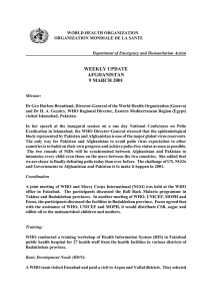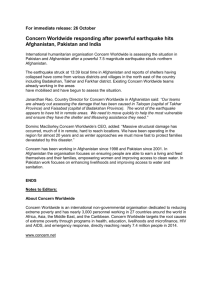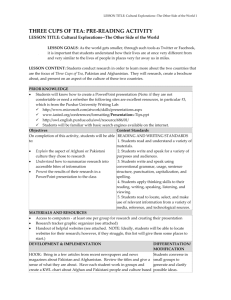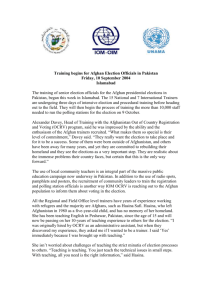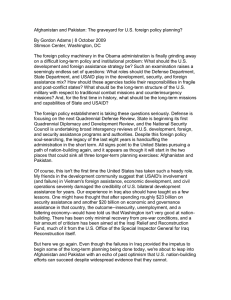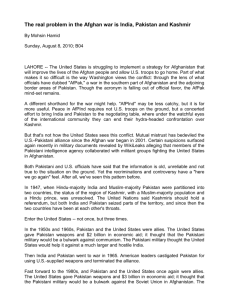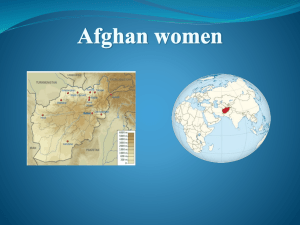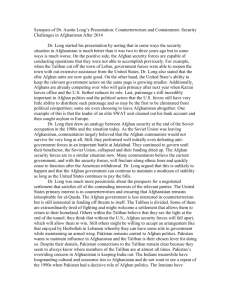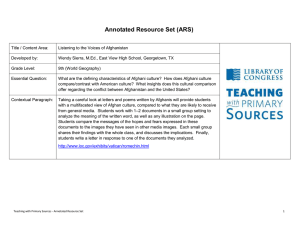Toll reaches 339 in quake-hit Pakistani, Afghan areas
advertisement
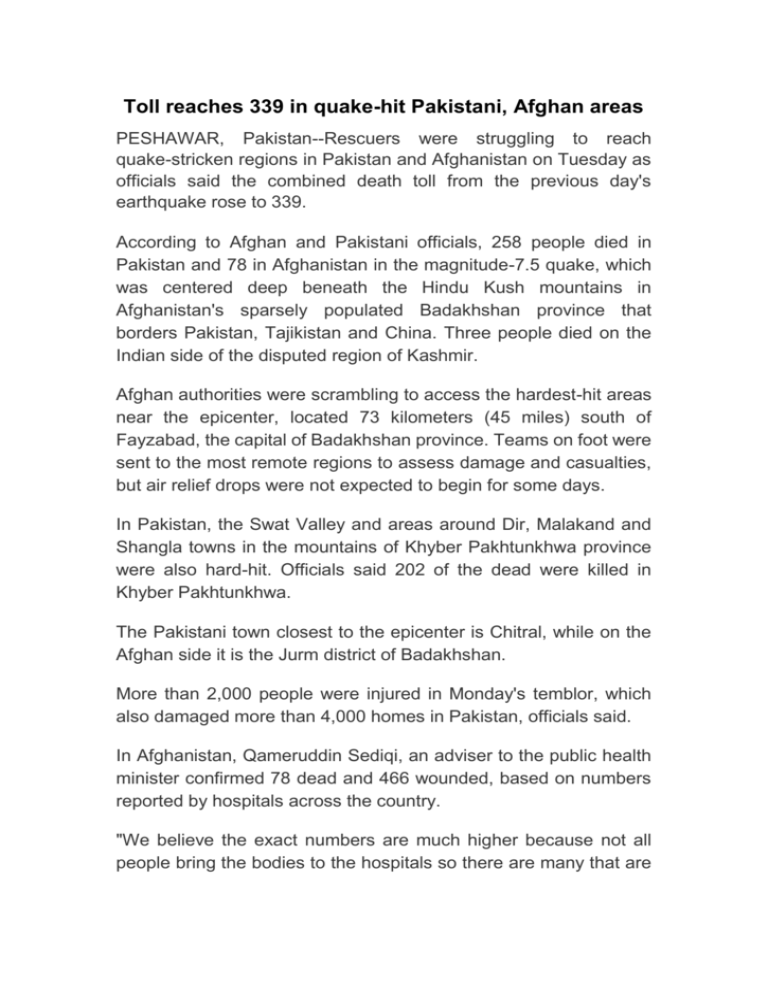
Toll reaches 339 in quake-hit Pakistani, Afghan areas PESHAWAR, Pakistan--Rescuers were struggling to reach quake-stricken regions in Pakistan and Afghanistan on Tuesday as officials said the combined death toll from the previous day's earthquake rose to 339. According to Afghan and Pakistani officials, 258 people died in Pakistan and 78 in Afghanistan in the magnitude-7.5 quake, which was centered deep beneath the Hindu Kush mountains in Afghanistan's sparsely populated Badakhshan province that borders Pakistan, Tajikistan and China. Three people died on the Indian side of the disputed region of Kashmir. Afghan authorities were scrambling to access the hardest-hit areas near the epicenter, located 73 kilometers (45 miles) south of Fayzabad, the capital of Badakhshan province. Teams on foot were sent to the most remote regions to assess damage and casualties, but air relief drops were not expected to begin for some days. In Pakistan, the Swat Valley and areas around Dir, Malakand and Shangla towns in the mountains of Khyber Pakhtunkhwa province were also hard-hit. Officials said 202 of the dead were killed in Khyber Pakhtunkhwa. The Pakistani town closest to the epicenter is Chitral, while on the Afghan side it is the Jurm district of Badakhshan. More than 2,000 people were injured in Monday's temblor, which also damaged more than 4,000 homes in Pakistan, officials said. In Afghanistan, Qameruddin Sediqi, an adviser to the public health minister confirmed 78 dead and 466 wounded, based on numbers reported by hospitals across the country. "We believe the exact numbers are much higher because not all people bring the bodies to the hospitals so there are many that are not being counted. And there are still areas we don't have access to so we are not aware of the situation there," he said. Badakhshan Gov. Shah Waliullah Adeeb said more than 1,500 houses there were either destroyed or partially destroyed. The province's casualty figures of 11 dead and 25 injured "will rise by the end of the day, once the survey teams get to the remote areas and villages," Adeeb said. Helicopters were needed to reach the most remote villages, many inaccessible by road at the best of times, he added. Now, landslides and falling rocks have blocked the few existing roads. Food and other essentials were ready to go, he said, but "getting there is not easy."

